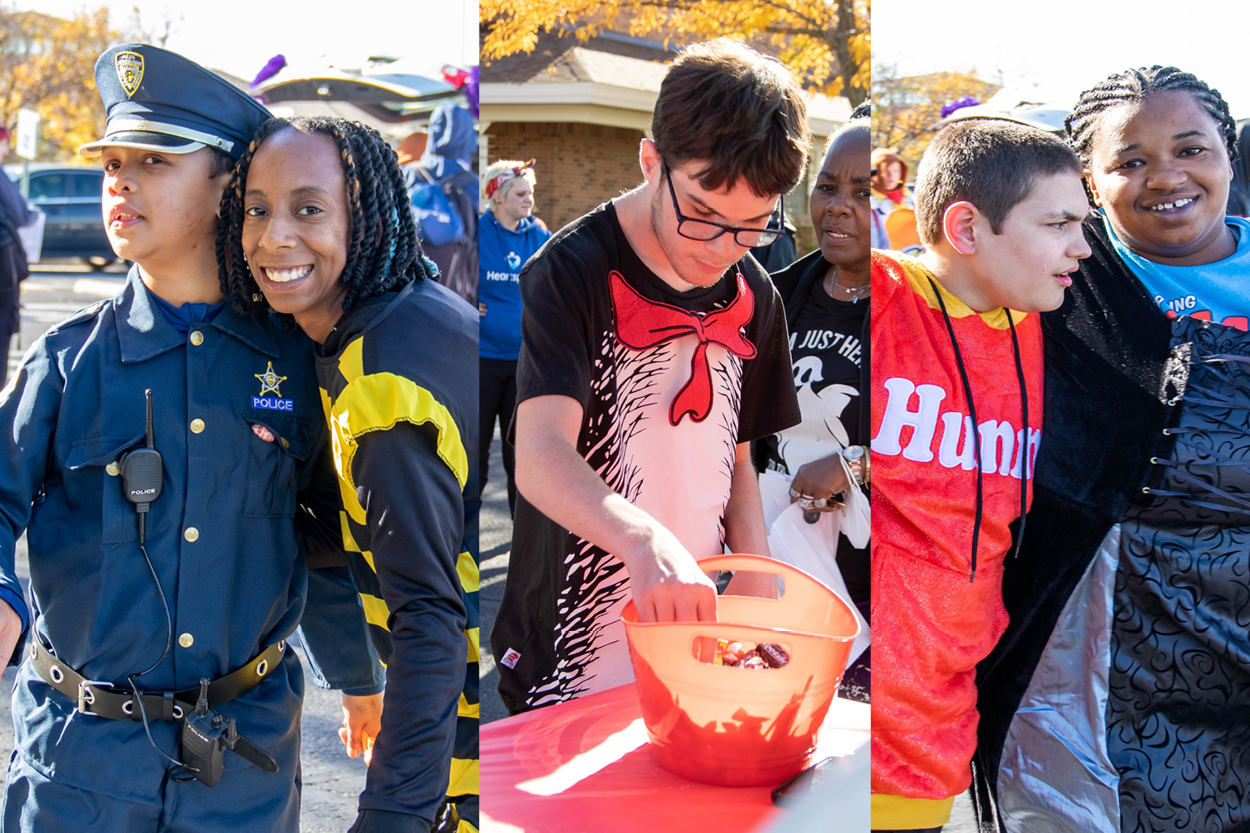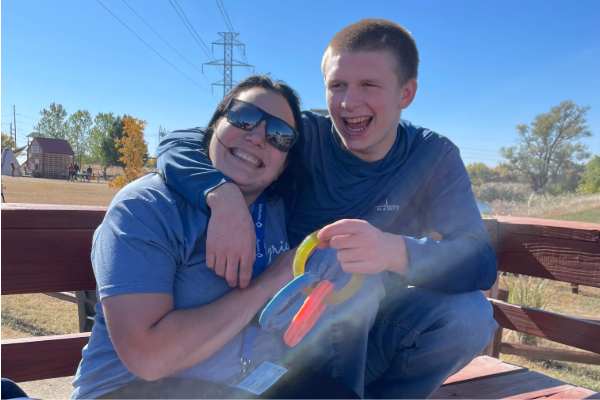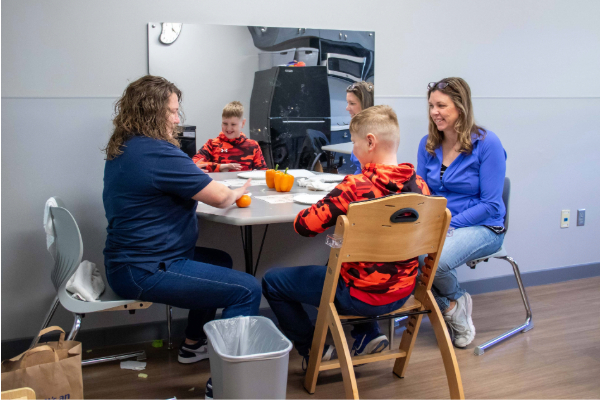3 MIN READ
Tips, Tricks, and Treats for Caregivers and Community Members to Make Halloween Accessible for Children

Let’s face it — Halloween can be overwhelming! Make safe, accessible celebrations possible for the neurodiverse children in your life or community with the tips and resources listed below.
Kara Gibson, Heartspring’s Clinical Director for Outpatient Services, says, “Halloween is an easy holiday to accommodate because kids are already encouraged to express themselves. You can use that to your advantage to help your child successfully navigate the holiday.”
Each of these suggestions might not fit your child's needs. If a suggestion on the list isn’t something that works for your family, don’t worry about offering it as a choice!
Caregivers
Pick a comfortable costume.
When it comes to costumes, every child is unique in their desire to dress up, however, this can be extreme for kids with sensory sensitivities. Halloween costumes could have scratchy fabrics and constraining seams, and masks could inhibit breathing. Consider picking a costume that uses the clothes they normally wear or a pajama-like material to keep them comfortable. They can also practice wearing the costume ahead of time, so they get used to how it feels. Your child also might choose not to wear a costume at all — and that’s perfectly okay, too.
Prepare your child.
To help children understand Halloween, you can print out visual aids with pictures and/or verbalize the evening ahead of time. Keep sentences short and clear. For example, “Tonight, we will go trick-or-treating. We will wear our costumes. We will go to eight houses. We will stay together and stay safe.”
Establish expectations.
While Halloween can be very exciting, some kids might not feel the same way. Encourage your child to try new things but accept that Halloween might look different than yours from childhood. This is a great opportunity to help your child practice setting boundaries, communicate their needs (like taking a break), and develop social skills.
Celebrate at home!
If trick or treating isn’t going to work for your child, consider bringing the fun inside by creating new traditions together.
-
Pass out candy to trick-or-treaters instead
-
Carve, decorate, or smash pumpkins
-
Watch a spooky movie
-
Make a special meal
The most important thing is that your child is happy, comfortable, and safe. There are plenty of ways to enjoy the holiday while remaining sensitive to your child’s unique needs.
Community
Have candy alternatives.
Nikki Bina, Interdisciplinary Therapies Manager at Heartspring, says, “Not all kids have the oral-motor skills to eat different types of chewy candy. In order for them to access Halloween, they need alternative treats.”
Candy alternatives can include:
- Sensory toys: slinkies, fidgets, slime
- Stickers
- Bouncy balls
- Crayons
- Bubbles
Have patience.
Kids with neurodevelopmental delays or disorders may not process information as quickly as other children. It might take them a little longer to say, “trick or treat,” if they say it at all. Wait 5-10 seconds after asking a question before repeating it or asking another.
Kids love choices!
Offer children the choice between one piece of candy over another, a toy or a snack, one color or another, etc., to encourage interaction.
Know your audience.
Your spooky animatronic decorations might be a big hit with most kids but moving decorations, flashing lights, and fog machines could be overwhelming for those with sensory sensitivities. Consider only turning them on once it’s dark out or invite your neighborhood to host a sensory-friendly trick-or-treating hour where everyone turns off their more startling decorations.
Team up.
Consider inviting another family to trick or treat as a group. Seeing other children participate might help hesitant trick-or-treaters join the fun as their peers model how to travel from house to house and interact with the community.
Halloween can be a special time for families to make memories and communities to share joy. Creating accessible opportunities for children strengthens their confidence in the community and helps them build interpersonal communication skills.
Consider sharing these tips with others so everyone can have a happy and safe Halloween!




